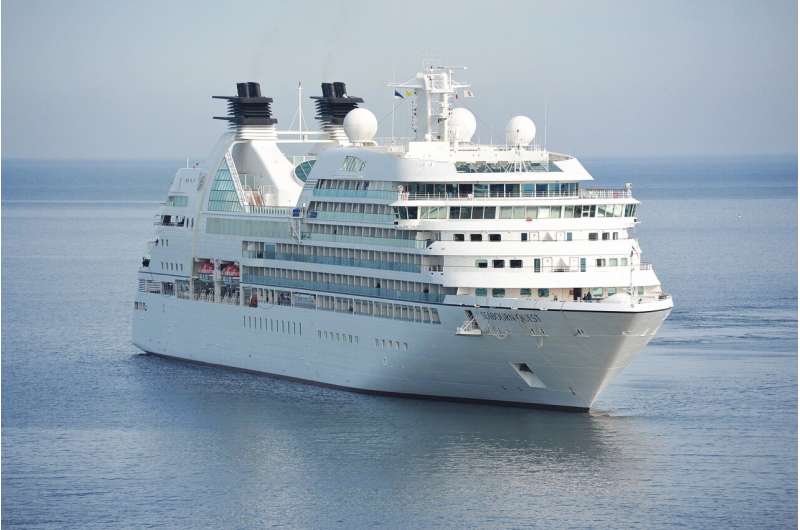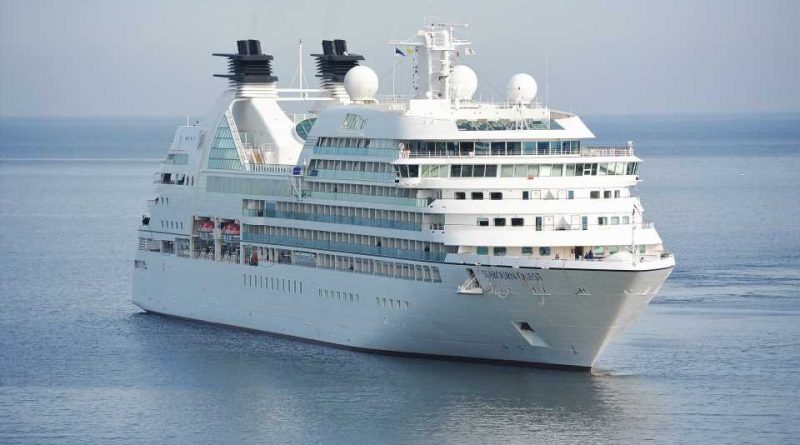From COVID to gastro, why are cruise ships such hotbeds of infection?

Dual outbreaks of gastro and COVID on the Grand Princess cruise ship that docked in Adelaide on Monday have now been declared over by the doctor on board.
A spokesperson for Princess Cruises, which operates the ship, said a number of passengers had presented with symptoms on a previous voyage. But the ship has since been disinfected and the number of people who were ill when the ship arrived into Adelaide was said to be in single digits.
While this is positive news, reports of infectious outbreaks on cruise ships evoke a sense of deja vu. We probably all remember the high-profile COVID outbreaks that occurred on cruise ships in 2020.
So what is it about cruise ships that can make them such hotspots for infection?
First, what causes these outbreaks?
Respiratory infectious outbreaks on cruise ships may be caused by a range of pathogens including SARS-CoV-2 (the virus that causes COVID) and influenza viruses. These can be spread by respiratory droplets and aerosols released when people breathe, talk, laugh, cough and sneeze.
Historically, troop transport ships also helped to spread the lethal 1918 flu virus between continents.
Gastro outbreaks on cruise ships are similarly well documented. More than 90% of cruise ship gastro outbreaks are caused by norovirus, which is spread from person to person, and through contaminated objects or contaminated food or water.
Gastro can also be caused by other pathogens such as bacteria in contaminated food or water.
What is the risk?
In 2020, around 19% of Diamond Princess passengers and crew docked in Japan tested positive to COVID. Ultimately, nearly one in four Ruby Princess passengers and crew docked in Sydney tested positive.
However, COVID generally presents a lesser risk nowadays, with most people having some level of immunity from vaccination or previous infection. The outbreak on the Grand Princess appears to have been much smaller in scale.
A three-year study before COVID of influenza-like illness (which includes fever), acute respiratory illness (which doesn’t require fever to be present) and gastro on cruise ships found these were diagnosed in 32.7%, 15.9% and 17% of ill passengers, and 10.9%, 80% and 0.2% of ill crew, respectively.
An analysis of data from 252 cruise ships entering American ports showed the overall incidence of acute gastro halved between 2006 and 2019. Passenger cases decreased from 32.5 per 100,000 travel days to 16.9, and crew cases from 13.5 per 100,000 travel days to 5.2. This decline may be due to a combination of improved hygiene and sanitation standards.
The risk of getting sick with gastro was significantly higher on bigger ships and longer voyages. This is because the longer you are in close contact with others, the greater the chance of exposure to an infectious dose of viruses or bacteria.
Why are cruise ships infection hotspots?
On cruise ships, people tend to crowd together in confined spaces for extended periods. These include dining halls, and during social activities in casinos, bars and theaters.
The risk goes up when the environment is noisy, as more droplets and aerosols are shed when people are laughing, shouting or talking loudly.
Passengers may come from multiple countries, potentially bringing variants from different parts of the world. Influenza, which is usually seasonal (late autumn to early spring) onshore, can occur at any time on a cruise ship if it has international passengers or is calling at international ports.
Human behavior also contributes to the risk. Some passengers surveyed following cruise ship gastro outbreaks indicated they were ill when they boarded the ship, or they became ill but didn’t disclose this because they didn’t want to pay for a doctor or be made to isolate, or they thought it wasn’t serious.
Those who became ill were more likely than those who did not to think that hand hygiene and isolation were not effective in preventing infection transmission, and were less likely to wash their hands after using the toilet. Given fecal contamination is a major source of norovirus transmission, this is concerning.
While there are usually a la carte dining options on board, many people will choose a buffet option. From personal experience, food tongs are handled by multiple people, some of whom may not have cleaned their hands.
What can help?
The Department of Health and Aged Care recommends cruise companies encourage crew and passengers to be up-to-date with flu and COVID vaccinations, and encourage anyone who becomes ill to stay in their cabin, or at least avoid crowded spaces and wear a mask in public.
They also recommend cruise ships have a plan to identify and contain any outbreaks, including testing and treatment capacity, and communicate to passengers and crew how they can reduce their transmission risk.
All passengers and crew should report any signs of infectious illness, and practice good hand hygiene and respiratory etiquette, such as covering their mouth if coughing or sneezing, disposing of used tissues, and washing or sanitizing hands after touching their mouth or nose.
South Australia’s chief health officer has commended the Grand Princess crew for their infection protection and control practices, and for getting the outbreak under control.
Provided by
The Conversation
This article is republished from The Conversation under a Creative Commons license. Read the original article.
Source: Read Full Article



